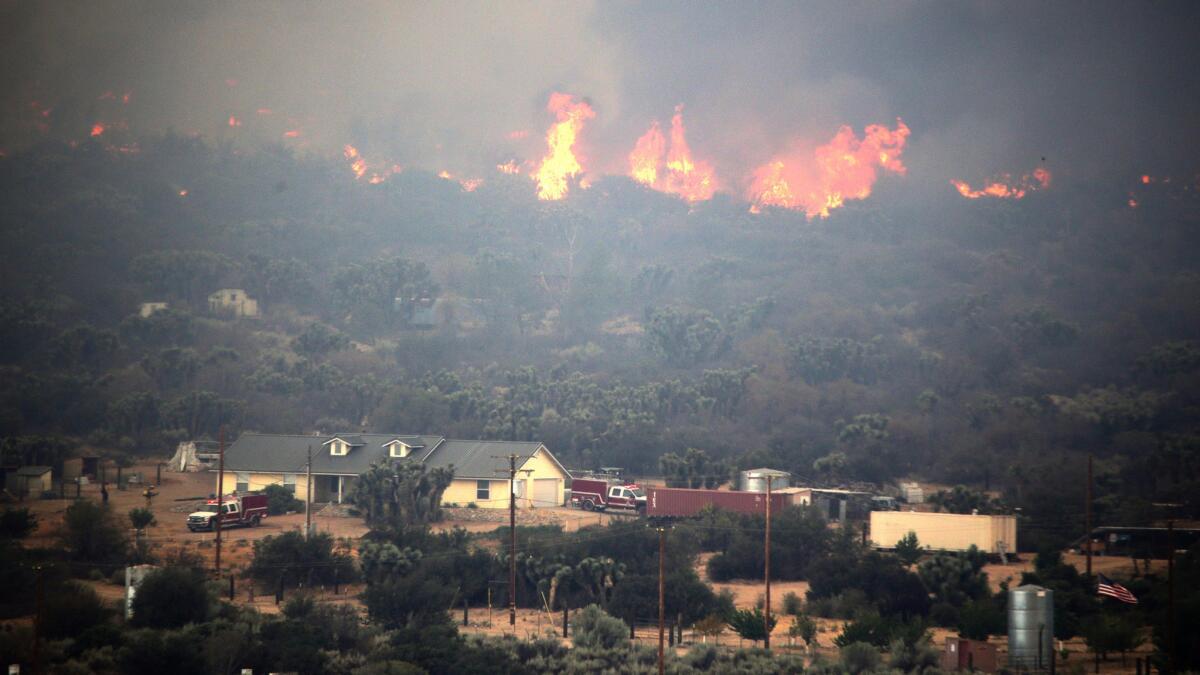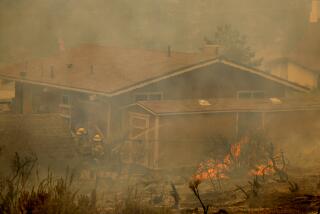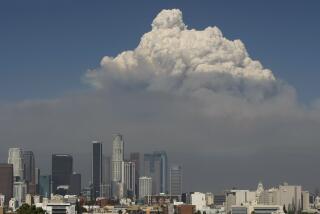Op-Ed: Why do we keep putting people in the way of wildfire? The wrong carrots and sticks.

It’s a truism California’s harsh 2016 fire season has proved all over again: Wildfire is not the problem; the problem is people living in dangerous places.
As an economist, I would add that the reason people continue building on fire-prone lands, despite the known hazards, is because we have the incentives all wrong. Wildfire presents a classic case of a moral hazard, which is what occurs when someone takes a risk knowing someone else will bear a great deal of the cost if things go wrong.
Typically, the wildfire version plays out in the West like this: Local governments, eager to reap increased property taxes, willingly approve new home construction, even on or near the most flammable of lands. When fire comes, federal and state agencies send in crews and air tankers to defend private homes. Most of the cost is borne by taxpayers, and by firefighters, especially those who lose their lives.
In the last 10 years, 60% of new homes in the U.S. have been built on lands adjacent to fire-prone public lands.
The Western wildfire problem will only get worse unless we get a handle on where and how we build in the future. In just the last decade, as drought and climate change have increased fire risks, the acres burned per wildfire has doubled, fires burn on average twice as long, and the wildfire season has extended by two months, with a year-round fire season in some parts of the West.
Over the same period, the cost to federal agencies to fight fires has tripled to more than $3 billion per year; it now consumes more than half of the Forest Service’s budget. That agency estimates that 50% to 95% of this cost goes toward defending homes. In the last 10 years, 60% of new homes in the U.S. have been built on lands adjacent to fire-prone public lands and, predictably, the number of homes scorched by wildfire has more than tripled. Since 2006, insured losses doubled, to more than $1.4 billion in 2015. And firefighter deaths continue to rise year after year.
There is no end in sight: The models all over the West show a hotter and drier climate in our future. A study my organization conducted for the Montana Legislature found that a 1 degree Fahrenheit increase in average summertime temperatures was associated with a 125% increase in acres burned and a doubling of the cost of defending homes from wildfire.
It will be impossible to control the rising costs, damages and dangers related to home development on fire-prone lands unless we get the incentives right. Ideally, towns and cities should be rewarded when they allow building to go forward in a fire-safe fashion, and they should be forced, financially, to think twice before approving any new housing developments on dangerous lands.
On the reward side of the equation, the new Community Planning Assistance for Wildfire program, funded by the Forest Service and private foundations, offers assistance to communities in the form of land-use planning advice and detailed wildfire risk mapping. Communities that participate learn, for example, how to adopt land use and development codes to encourage developers to set aside open space and recreational trails as fuel breaks in fire prone settings, and how to use building codes to require ignition-resistant construction materials.
Some of these kinds of planning activities are already in force in areas where wildfire has recently taken a heavy toll. In the city of San Diego, the owners of more than 40,000 homes in the so-called Wildland-Urban Interface are required to manage hazardous vegetation and maintain their properties with an eye on fire resistance. (Los Angeles has similar rules.) In other places, such as Santa Fe, N.M., ordinances restrict the type of development allowed within the highest wildfire risk areas.
One approach is to enact a community rating system, where cities and towns that put in place safety restrictions on development would become eligible for a cluster of rewards, such as free land-use planning assistance, detailed wildfire-risk mapping or targeted fuel reduction on nearby federal lands. The Forest Service, for example, doesn’t have the resources to reduce fuel loads everywhere. It could direct those efforts to the highest-rated communities.
Rewards are necessary, but the hard and unpleasant reality is that we will never solve the wildfire problem unless local governments are forced to bear a higher proportion of the firefighting costs. Keeping more of the costs local would create a strong incentive for continually improving land-use planning and other wildfire preparation policies. It may also provide elected officials the political cover they need to require stricter fire-safe standards for existing as well as new developments because it would make land-use planning a fiscal necessity.
To some degree, efforts in mapping, zoning and vegetation control in parts of California, with its long history of expensive wildfires, are evidence that higher local costs result in higher levels of prevention. But even in Southern California, the mechanics have not yet been created to shift enough of the financial burden to local governments that do little to prepare for wildfire or to reward those that do a lot.
For too long policies have been set mostly in reaction to the last, worst fire. Now we have to bring together the firefighting community, city and county leaders, legal scholars and federal land managers to craft a set of rewards — and penalties — that will result in safer communities in the highly flammable West and the rest of the nation.
Ray Rasker is the executive director of Headwaters Economics, an independent, nonprofit research group in Montana that works to improve land management decisions in the West.
Follow the Opinion section on Twitter @latimesopinion and Facebook
More to Read
A cure for the common opinion
Get thought-provoking perspectives with our weekly newsletter.
You may occasionally receive promotional content from the Los Angeles Times.










